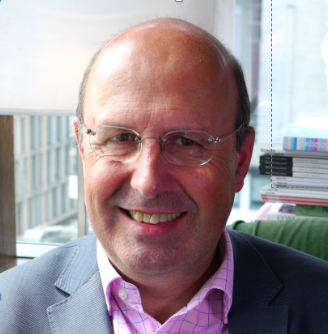You can sign up to our LinkedIn newsletter here.
Many of the people reading this will be in their forties and fifties. They will have senior, responsible roles in organisations. They’ll have huge capacity to influence the environment in which they operate today. What I want to explore in this article is what you can do today to foster the environment you’re going to need when you’re five, ten or even twenty years older than you are today.
Let’s have a reality check. Ageism does exist, maybe you haven’t experienced it yet, or maybe you experienced it when you were in your early twenties, and you didn’t have a language to describe it. But ageism does exist. The evidence for it is irrefutable. Ageism impacts access to employment, promotion, new opportunities and training or development. For the rest of this article, I’m going to assume that ageism does exist. Knowing this, how do you influence your environment so that you will be in the best possible place as you get older?
Hiring against Ageism
If you are a senior professional, then you will get involved in hiring decisions. You may not be running the recruitment process, but you will have people in your direct reports who are responsible for bringing new people into the business. In many cases, they will send people to you for a final interview. Often, you’ll get to be the person who signs off the job specification and the person specification for new roles. Even if you’re not, you can significantly influence them because, within your sphere of control, these recruits will be working for you. Often you will be a part of an executive team where you could influence the attitude to recruitment much more widely than for yourself.
Promoting against Ageism
The second area where you have significant influence is around promotion. You will often be consulted on promotion as a senior professional. You will often be involved in deciding who gets promoted and you’ll certainly have an opportunity to influence the process of promotion.
Training and Development without Ageism
The third area where you have ability to have influence is in relation to training and development. You will have huge influence on who is identified as suitable for training and where training expenditure is allocated. You’ll also have huge influence on the development paths that you expect of the people within your direct field of control. Again, as part of the executive team, you can shift the way that works.
Leading against Ageism
When you are involved with recruitment, promotion or training and development, the way that you take those decisions will help to set the culture. Just by leading by example, you have a huge opportunity to change the environment and set the culture.
Why does this Matter for you to Thrive as you get Older?
Endemic across the workplace is explicit and implicit ageism, conscious and unconscious bias. The way that the job descriptions are written may reduce the opportunities for older candidates. The way the person specs are written may prejudice the recruitment process. External and internal recruiters will take their lead from people like you. Because there is this strong, historical, consistent bias against older people, then by default, they will frame what they’re doing on the recruitment side, to limit access to older people. They will perpetuate ageism.
Prejudice in Management
Think about the younger managers that report to you. Often, they will feel uncomfortable about recruiting direct reports who are older than them. Again, a subtle form of ageism. You could actively encourage them to benefit from the different life experiences of older people. You should give them the confidence that they can manage these people and show them how to get the best from them. You should encourage them to recognise the long-term asset they represent to the organisation.
Prejudice in Promotion
On the promotion side, if you’re a senior professional in a larger organisation there will be a process of succession planning. Somehow in the world of succession planning the assumption is that your succession plan relies upon people who are going to climb up the pyramid and stay with the business until they’re in their mid-sixties. On that basis, you can be prejudiced about looking at promotions for older people if you envisage that they’re going to retire in the next five years.
Reality check. Anybody who’s in your business today, with the appetite for staying longer in your business, will be significantly influenced by their age. The truth is that older people are more likely to stay longer than younger people. Younger ambitious people will change jobs more frequently. This is particularly extreme with millennials who are looking to change jobs every 18 to 36 months. Re-evaluate your perspective. ‘Are they going to still be here in 10 years’ time?’, is the wrong question when you look at succession planning. You need to see who the right person is to step up to the next level. Unless they’ve made a commitment to leave on a particular date, look for the best candidate irrespective of age. Indeed, recognise that older people will often stay longer. They may also bring things into that role that younger people won’t: older people are often more productive, more adaptable and more flexible contradicting all the stereotypes.
So, reframe the way that you think about promotions, with the managers who are responsible for promotions in their area, encourage them to actively consider promoting older people who will be managed in that context, by people who are younger than them, don’t see that as a barrier to promotion.
Ageism free Training & Development
Older people consistently report that they are overlooked for training and development opportunities. In many large corporates, the traditional graduates programme provided an accelerated career path if you joined shortly after university, perhaps in your early twenties. For a period of five to eight years, you would change roles internally within the business and get wide range of understanding across the business. You’d get experienced in different geographies or different responsibilities. It was a fast-track executive development programme. As graduate trainees matured into their thirties, they would achieve significant management positions and may be ready to go onto an Executive MBA. This would prepare them for senior leadership roles. By their late thirties, early forties, this model assumes that their training and development is complete. Nobody considers the development potential for older people. Nobody looks for new opportunities for older people to take on new roles or be stretched by fresh challenges.
There’s a friend of mine who was a finance director in a global pharmaceutical business. He was being considered for the global CFO role and as part of that planning, he was given experience of a range of different business activities. He went and worked in the Indian business. He got involved in new product development. He gained a whole series of different perspectives. This was not as a graduate trainee in his late twenties or early thirties, this was a mature, experienced, professional in his mid to late forties.
It can happen within organisations. You can prepare people for further promotion by giving them range of different experiences. It makes sense to invest in offering them different roles, but also to continually renew and develop their skills and capabilities through training. Remember, the likelihood is that older people will stay with you longer. Pushing them into a career cul de sac and ceasing any investment in their future, is a failure to invest in the future of your business.
Are you Signalling that Older People should Leave?
Many of the people in their fifties that I talk to, have chosen to do learning and development without the support of their employer. There are no opportunities with their current work so they may do a coaching qualification that sets them up for a new future. They may round out their professional skill with richer skills that improve their emotional intelligence or their entrepreneurial capability. They are doing this in their spare time because they don’t feel valued in the business and they’re trying to find an exit route. How much more valuable would it be for you if they brought these new capabilities to your organisation?
Conclusion
To make the most of your future, you need to change the culture towards older people now before you become older too. To quote Arleen Lorrance, in a chapter she wrote entitled The Love Project, ‘…be the change you want to see happen’. Are you ready to take the first step?

Charles McLachlan is the founder of FuturePerfect and on a mission to transform the future of work and business. The Portfolio Executive programme is a new initiative to help executives build a sustainable and impactful second-half-career. Creating an alternative future takes imagination, design, organisation and many other thinking skills. Charles is happy to lend them to you.
